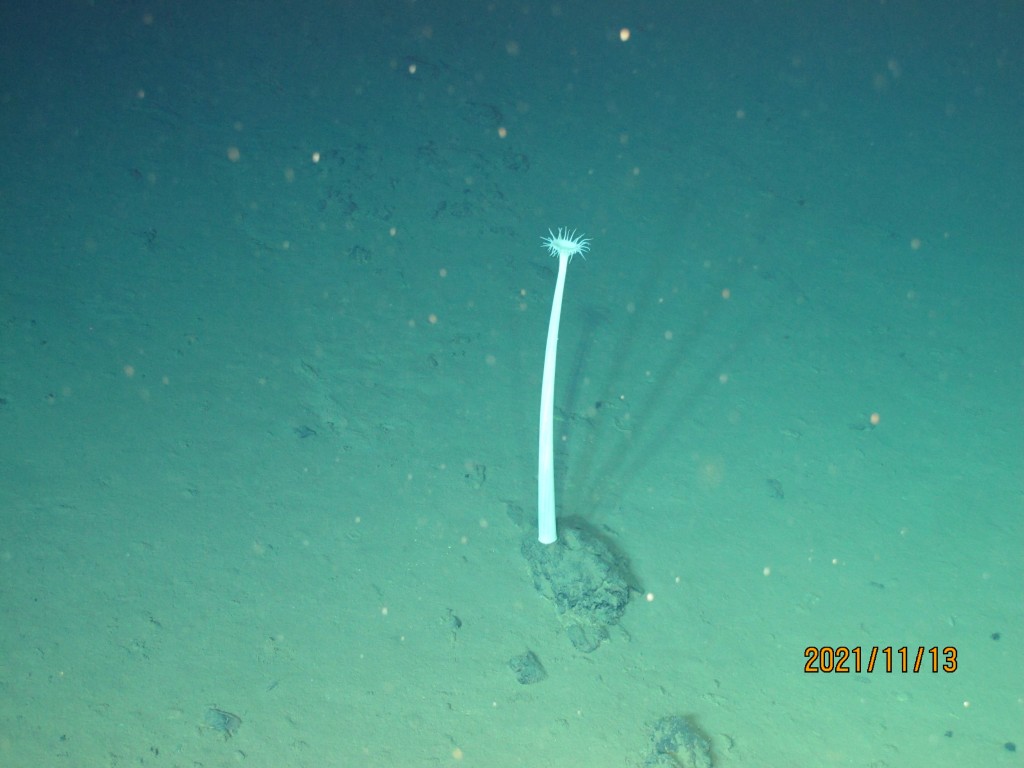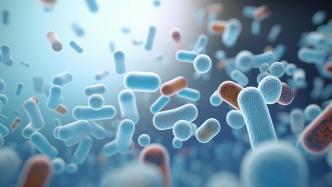
Human activities can affect the deep sea in just a few decades, so does what happens in this “corner” also affect us?
The Hadal zone is an area below 6,000 meters below sea level. As its English etymology, the name of Hades, the king of the underworld, suggests, this cold, dark undersea hell is desolate and barren, with a water pressure of more than 1,100 standard atmospheres, equivalent to a pressure of 12,100 tons per square meter.
Even in such a desperate situation, life is not lost. These mysterious creatures can adapt to the extreme environment of the deep sea, but people know very little about them. Recently, a series of studies completed by Chinese scientists revealed a huge and prosperous abyssal ecosystem, analyzing the genetic strategies of microorganisms and two macroorganisms to adapt to extreme environments. The study was published in the journal Cell in the form of an album on March 6, 2025. The first batch includes 4 papers, and many more are waiting to be published.

The abyss hosts a vast and thriving ecosystem. Image courtesy of the study’s authors.
These studies are the result of a systematic deep-sea study called the "Mingyuan Project" (Mariana Trench Environment and Ecology Research Project, referred to as the "MEER Project"), which is jointly led by Shanghai Jiao Tong University, the Institute of Deep Sea Science and Engineering of the Chinese Academy of Sciences, BGI Group and other institutions. From October to December 2021, the research team used the "Struggler" manned submersible independently developed and produced by my country to conduct 32 dives at 145 sites in the Mariana Trench, Yap Trench and Philippine Basin, and collected more than 2,000 samples of water, sediments, macro-organisms, etc. at a depth of 6,000-11,000 meters.
Through gene sequencing and analysis, researchers have discovered more than 7,000 species of abyssal microorganisms that may be new species. They have formed a prosperous "society" on the seabed through different genetic strategies. The slightly larger abyssal hook shrimp has a large and repetitive genome, which is four times the number of human genomes. In order to adapt to the deep sea, larger fish have evolved a variety of stress-resistant genetic strategies. Studies have shown that there are convergent adaptation strategies to the abyssal environment that transcend species boundaries.
How do researchers go deep into the seabed and conduct research? How do deep-sea creatures survive and coexist in desperate situations? What do these discoveries have to do with us humans? In order to answer these questions, The Paper recently interviewed researchers from the "Abyss Project".
Diving into the abyss on the "Struggler"
The special thing about deep-sea research is that representative deep-sea areas are scattered all over the world, and there are only a few countries that have the conditions to conduct diving. To do such research, opportunities often come first, and plans come later.
In February 2020, the "Struggler" manned submersible developed and produced by China completed final assembly and onshore joint debugging. On November 10, 2020, the "Struggler" successfully reached the deepest point in the Mariana Trench, with a bottom depth of 10,909 meters. It is currently the only submersible that can take three people to a depth of 10,000 meters underwater at the same time, and it has also become the prerequisite for the "Abyss Project" to be carried out.
"This is a rare opportunity for both mankind and China. It was passed immediately after our application was approved," said Xiao Xiang, director of the School of Life Sciences and Technology/National Key Laboratory of Microbial Metabolism and International Research Center for Deep Life, Shanghai Jiao Tong University.
When he and his colleagues boarded the expedition ship and headed for the sampling point, they did not have a complete sampling and research plan. They brainstormed, determined the expedition goals on the spot, and contacted and arranged the scientific research and technical teams of various units to implement the details of the research plan.
"Before the ship returns to the port with the abyss samples, the processes of sample preservation, processing, and analysis must be clarified. We, the researchers from different research units on shore, were also 'called upon to take charge' and participate in this big project together," said Han Mo, senior experimental R&D engineer at BGI Life Sciences Institute.
When the research vessel arrives near the sampling destination, it will lower the "Struggler". After scientists and engineers take it to the deep sea, they can use the robotic arm to operate the sampling device to sample seabed sediments, and can also use other equipment such as trapping devices and seawater filtration systems to collect different types of biological samples. After the robotic arm has collected the samples, it will put the samples on a "tray" next to it and bring them back together. Including the time of diving and surfacing, the divers have to stay in the submersible for more than 10 hours at a time.

The Endeavour is sampling. Image provided by the author of the study.
"Inside the 'Fendouzhe' is a titanium alloy spherical cockpit with a diameter of 1.8 meters, which can seat three people. The pilot sits in the middle, and the co-pilot sits on the left, who is responsible for assisting the pilot, observing the environment, and operating electrical facilities such as the robotic arm. The scientific researchers sit on the right, and communicate with the pilot and co-pilot when sampling is needed," said Meng Liang, an associate researcher in biotechnology at the BGI Life Sciences Institute.
After the samples were collected, scientists tested or processed them non-stop on the research vessel on the sea surface, because these samples would die quickly due to the drastic changes in the physical and chemical properties of the surrounding environment. For example, Meng Liang introduced that although the samples of the abyssal gammarus we collected did not appear to have changed significantly in appearance, their cells were very likely to have ruptured and the biomacromolecules began to degrade. If they were not processed in time, it would be difficult to conduct subsequent analysis.
During the two months of the expedition, the research team collected a large number of deep-sea biological samples through this "non-stop" approach. Several authors said that these samples are extremely precious. They not only reflect the deep-sea ecology of a specific period, but also serve as a historical record of human impact on the deep sea.
"This is a description of the impact of humans on the bottom of the Mariana Trench from October to December 2021. In the future, we don't know when we will go there again," Xiao Xiang said. "After 100 or even 1,000 years, when someone goes there again to collect samples, the conditions of the trench they see can be compared with our current data, and we can know what human activities have affected."
"We will try our best to make this set of research data public and present it in its entirety," he said.
Genetic secrets of deep-sea creatures
After the ship docked, the samples were sent to the laboratories of various cooperative units for genome sequencing and other tests and analysis. Based on these data, the researchers have made many explorations into the gene functions, population distribution, and adaptation mechanisms of these abyssal life forms.
"Previous studies have reported the existence of some life in deep abysses such as the Mariana Trench, but no one is sure how large the scale of this life is, how diverse it is, and whether it is ubiquitous. This time, we have confirmed for the first time that there is indeed a thriving ecosystem, especially microorganisms, in the 10,000-meter abyss," said Han Mo.
This prosperity is first reflected in the scale of diversity. "We identified 7,564 representative microbial genomes at the species level, 89.4% of which were newly discovered. How big is this scale? It is comparable to the number of all known marine microbial species in the world, directly improving our understanding of deep-sea microorganisms by an order of magnitude, and this is just the discovery of this study."
The researchers also found that microorganisms have different strategies for adapting to the extreme environment of the abyss. Some microorganisms may face extreme environments in a "streamlined" way. If a metabolic function is not related to maintaining the most basic survival, some microorganisms will simply "abandon" the relevant genes to save energy and nutrition.
Some microorganisms have chosen a completely opposite strategy. On the one hand, they will retain some genes related to stress tolerance or antioxidants, but at the same time they will find ways to enrich their ability to perceive various factors in the environment and use different substances to maintain their own survival.
"To give an example, these two strategies are like carnivores and omnivores. Carnivores are very efficient in obtaining energy, while omnivores can eat everything. They can survive even if the environment changes." Han Mo introduced that the formation of these strategies may be related to the overall environmental pressure of the abyss and local environmental changes.
The abyssal microorganisms are both interdependent and competitive, forming a prosperous society. "Some streamlined microorganisms do not even have complete basic metabolic pathways. They cannot survive alone and must cooperate with different species, such as using the metabolic waste of other microorganisms. This forms a complex metabolic network, which uses a 'collective' way to squeeze out every bit of resources in this barren environment." Han Mo mentioned, "Other microorganisms will secrete substances such as antimicrobial peptides to kill other microorganisms to obtain a better living environment."
In addition to microorganisms, the researchers also sequenced the entire genome of a typical species of the abyss, the hook shrimp (Hirondellea gigas), for the first time, and explored its biological mechanism for adapting to high-pressure environments.
"This type of shrimp belongs to the order Amphipoda, while the shrimp we usually talk about belongs to the order Decapoda. The two can barely be considered 'distant cousins'." Meng Liang introduced, "The shrimp is a scavenger that can eat the residue that settles from the sea surface. It is also the main food of deep-sea fish. Therefore, it plays a key role in 'connecting the upper and lower' in the abyssal ecosystem."
The abyssal gammarus is a "star species" in the study of abyssal ecology, but its complete genome has never been cracked. In this study, the research team successfully "pieced together" the genome of the gammarus with perfect sample pre-processing and long-read gene sequencing technology.
The study found that the size of the gammarus genome is 13.92 GB, more than four times the size of the human genome (3.2 GB), setting a new record for the genome of the Amphipoda order. In its gene sequence, there are up to 71.98% repetitive sequences. The study speculates that this may be related to adaptation to the deep-sea environment, but further research is needed.
Meng Liang said that one of the "mysteries" of the hook shrimp is that it has great flexibility in adapting to pressure. "After its larvae grow into adults in shallow waters, it can go to deeper places. Its vertical distribution is very wide. We have collected it at the deepest place close to 11,000 meters, and also at 6,800 meters. The pressure change between them is very large."
The researchers first targeted a compound known to help abyssal species resist stress, TMAO (trimethylamine oxide), which can stabilize the structure of cell proteins and regulate the osmotic pressure balance inside and outside the cell to cope with pressure changes. However, in the genome of the abyssal gammarus, no complete anabolic pathway was directly found.
"We found inspiration through previous research - humans can synthesize TMAO through intestinal microorganisms, could it be the same for gammarus?" Meng Liang said. Indeed, they found some dominant bacteria in the intestines of gammarus that can cooperate with the host to synthesize TMAO and adjust the content to better adapt to the stressful environment.
The "collaboration" between gammarus and microorganisms does not stop there. Studies have found that gammarus can also work together with microorganisms to decompose indigestible lignin.
"The material energy in the deep sea is very scarce, which makes it difficult for larger animals that need to eat. Not only is there little food sinking from the surface, but it is also the 'dregs' that the surface doesn't want to eat. The shrimp needs to use these substances efficiently and convert them into nutrition."
Previous studies have found that gammarus feeds on indigestible lignin. In this study, researchers found the complete pathway for secreting this digestive enzyme in the gene. "Some of them are possessed by the gammarus itself, and some are provided by intestinal microorganisms. Microorganisms not only get 'benefits' from the host, but also provide a little help to survive together in a difficult environment." Meng Liang said.
There are still too many unsolved mysteries about deep-sea creatures. Another study in the series compared the genomes of 11 deep-sea fish and found that the concentration of TMAO in fish had no significant correlation with depth, which means that deep-sea creatures may have other mechanisms to resist high pressure. The study pointed out that the accumulation of polyunsaturated fatty acids can also maintain the fluidity of cell membranes, helping fish to resist high pressure.
In-situ sampling helps researchers obtain more accurate deep-sea samples, but after all, it is impossible to directly observe and test on the seabed for a long time, so a lot of information cannot be obtained. Although researchers have delved into the genetic level, it will take a lot of research to get all the secrets of deep-sea creatures' adaptation to extreme environments from genes.
"We know that this is a gene sequence, but what is its function? What is the molecular mechanism that plays a role in adaptability to extreme environments? We haven't fully figured it out yet. So we hope that after the results are published, they will attract the interest and attention of more colleagues, and we can work together to tackle the problem, so that we can have a deeper understanding of deep-sea species." Meng Liang said.
The Abyss and Humanity
There is a theory that life originated in the ocean, and human ancestors also moved from the ocean to land. The early earth environment was very extreme, and life was likely born in a similar environment. To verify this conjecture, we need to explore extreme environments.
"Although we did not find direct evidence in the study of abyssal microorganisms, we did notice some clues. Some microorganisms are closer to the branches of the base on the evolutionary tree. Their prosperity in the abyss may mean that more early evidence of life evolution is preserved here than in conventional environments. This is good news." Han Mo told The Paper, "If we can find more clues to early life or even the origin of life in subsequent research, I think it will be very exciting."
In addition to answering scientific questions, the "survival secrets" of deep-sea creatures can also be used as a reference for humans. Xiao Xiang mentioned that some aromatic compounds are persistent pollutants on the ground and are difficult to degrade. But in the deep sea, microorganisms with no other sources of nutrition actually feed on these compounds. "Deep-sea life can deal with these pollutants. Can we use these microorganisms to take care of our natural environment and benefit mankind?"
In the medical field, existing antibiotics have already developed resistance problems, and the discovery of new antibiotics has been slow. "Some of the newly discovered abyss microorganisms can secrete substances such as antimicrobial peptides, which enriches our reserves and may provide new options for drug development," said Han Mo.
"We have found that some special laws of life are universal in the abyss. We are now communicating with some hospitals to see if we can serve medical treatment, not only as a drug aid, but also to understand the strategies of life." Xiao Xiang also mentioned, "For example, understanding the relationship between pathogenic microorganisms, environmental microorganisms and hosts in extreme medical environments."
Perhaps the most direct relationship between the abyss and human society is that, despite being far apart, they belong to the same ecosystem. Not only can human activities affect the abyss, but the abyss may also affect our living environment in turn.
"We have discovered a lot of human waste pollution in some deep seabeds, including plastic, glass, metal products, which have given us a great shock. If we don't do this research, it may be difficult for ordinary people to imagine that the 10,000-meter deep abyss thousands of kilometers away from you may be polluted by your discarded garbage." Han Mo said, "How many years have it been since cans appeared? Human activities can affect the deep sea in just a few decades, so can what happens in this 'corner' also affect us?"
He gave an example, saying that when human pollution brings different chemicals to the deep sea, microorganisms will definitely find ways to adapt to this changed environment, but we do not understand the possible effects of these changes.
"Of course, we can be optimistic that these microorganisms will degrade the plastics, breaking them down into small organic molecules and returning them to the ecological cycle. But is it possible that they produce toxic and harmful substances when metabolizing pollutants? Will they eventually be unable to survive in the pollution, thus affecting the material and energy cycles of the earth?"
"Humanity's understanding of deep-sea life is still very superficial. If we allow pollution, no one knows whether the consequences will be good or bad. As a scientific researcher, I think people should be more cautious and prepare for a rainy day," said Han Mo.

